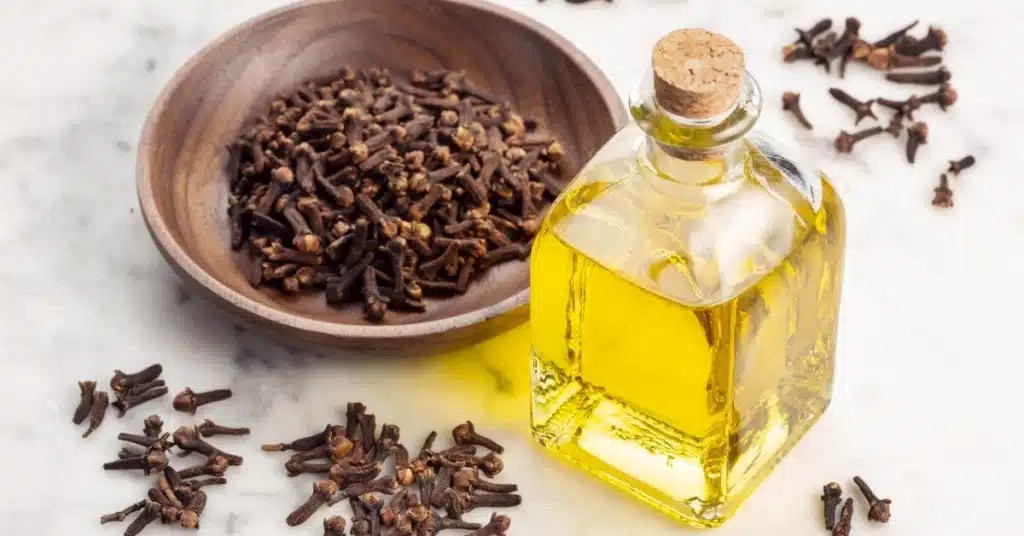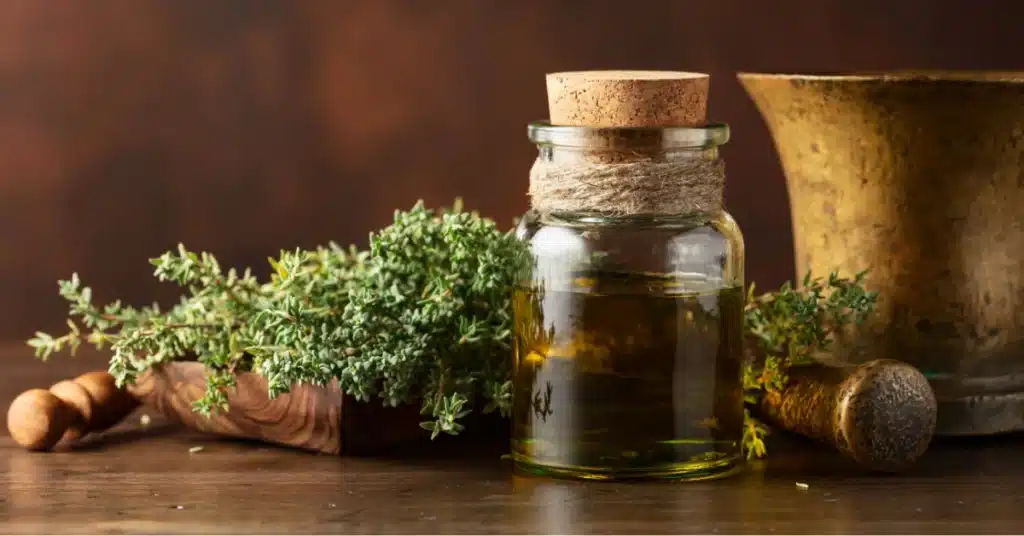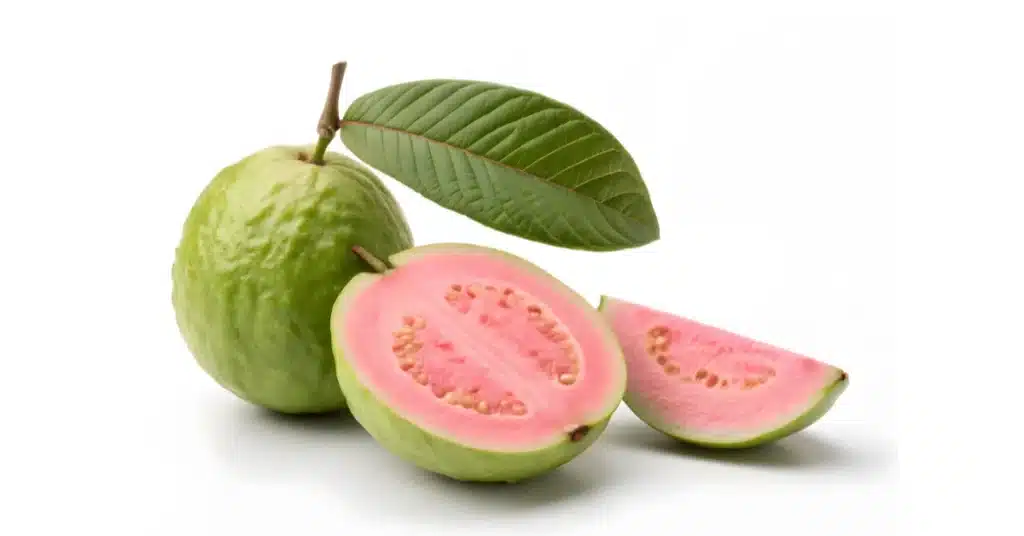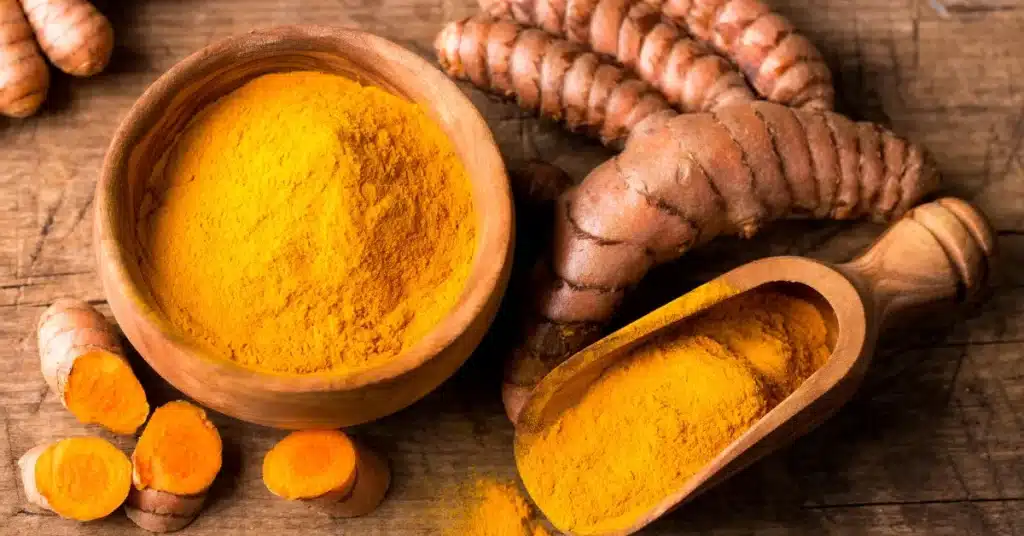Home Remedies for a Toothache: Fast Relief Methods That Work
Salt water rinses, cold compresses, and over-the-counter pain relievers provide the fastest toothache relief at home, typically working within 5-20 minutes while you arrange dental care.
Tooth pain can strike at any time, often when dental offices are closed. While home remedies for toothache won’t cure the underlying problem, they can provide temporary relief until you see a dentist.
The most effective methods work by reducing inflammation, killing bacteria, or numbing the affected area. Some remedies have strong scientific backing, while others rely on traditional use with limited research evidence.
This guide prioritizes proven methods first, followed by natural alternatives and transparency about which remedies lack scientific support. All home remedies are temporary solutions, not replacements for professional dental care.
How to Stop Tooth Pain Fast
Stop tooth pain fast by combining three proven methods simultaneously: rinse with warm salt water, apply a cold compress to your cheek, and take ibuprofen or acetaminophen. Most people experience noticeable relief within 5-10 minutes using this triple approach.
This method works because it targets tooth pain from three angles at once. The salt water removes debris and reduces bacterial load, the cold compress constricts blood vessels to minimize swelling, and the pain reliever blocks pain signals in your nervous system.
Immediate action steps for fast relief:
- Rinse your mouth with warm salt water for 30 seconds
- Apply a cold compress to your cheek for 15 minutes
- Take ibuprofen or acetaminophen according to package directions
- Repeat the salt water rinse every 2-3 hours
- Reapply the cold compress hourly as needed
If you’re dealing with severe pain in the middle of the night, this combination offers the most reliable relief while you wait for morning.
The key to stopping tooth pain fast is acting quickly and consistently. Don’t wait to see if the pain goes away on its own, especially if it’s interfering with sleep or daily activities.
How Do You Numb Tooth Pain at Home?
Numbing tooth pain at home requires methods that either physically reduce nerve sensitivity or chemically block pain signals. The four most effective approaches are salt water rinses, hydrogen peroxide rinses, cold compresses, and over-the-counter pain medications.
These methods work faster and more reliably than most natural remedies because they target the biological mechanisms of pain and inflammation directly. Each method has been studied in clinical settings and recommended by dental professionals.
Salt Water Rinse
Salt water rinses reduce toothache pain within 5-10 minutes by creating a hostile environment for bacteria and drawing out excess fluid from inflamed tissues. This simple remedy works as a natural disinfectant and helps dislodge food particles stuck between teeth.
The osmotic effect of salt water reduces swelling in gum tissue, which often contributes significantly to tooth pain. When gum tissue swells, it puts pressure on nerve endings and makes the pain feel more intense.

How to make and use a salt water rinse:
- Add 1/2 teaspoon of table salt to 8 ounces of warm water
- Stir until the salt completely dissolves
- Swish the solution around your mouth for 30 seconds
- Focus on the affected area but rinse your entire mouth
- Spit out the solution (don’t swallow it)
- Repeat every 2-3 hours as needed
Use warm water, not hot, to avoid aggravating sensitive areas. The warmth helps the salt dissolve better and provides additional soothing effects. Cold water can intensify pain if you have temperature sensitivity.
Salt water rinses are safe for almost everyone, including pregnant women and children old enough not to swallow the solution. This makes it the first-line home remedy dentists recommend most often.
Hydrogen Peroxide Rinse
Hydrogen peroxide rinses provide toothache relief within 10-15 minutes by killing harmful oral bacteria and reducing plaque buildup. This antiseptic solution also helps soothe bleeding gums, which often accompany toothaches caused by infection or gum disease.
The bubbling action you see when using hydrogen peroxide indicates it’s actively breaking down bacteria and clearing debris. This makes it particularly effective for toothaches caused by infection or abscess.

How to safely use hydrogen peroxide for tooth pain:
- Mix equal parts 3% hydrogen peroxide and water
- Never use undiluted hydrogen peroxide in your mouth
- Swish the diluted solution for 30 seconds
- Spit it out completely (never swallow hydrogen peroxide)
- Rinse your mouth thoroughly with plain water afterward
- Use no more than twice daily
The 3% concentration you find in drugstores is safe when properly diluted. Higher concentrations can damage oral tissues and should never be used. If you experience burning or irritation, dilute the solution further or discontinue use.
Hydrogen peroxide works best for bacterial-related tooth pain rather than pain from physical damage like cracks or chips. It’s especially helpful if your toothache comes with bad breath or a foul taste, which suggests bacterial involvement.
Cold Compress Application
Cold compresses reduce tooth pain within 15-20 minutes by constricting blood vessels and slowing nerve signal transmission. This method works particularly well if your toothache involves facial swelling or if you’ve injured your tooth through trauma.
The cold temperature numbs the area temporarily and reduces inflammation, which is often the primary source of throbbing pain. It also helps control swelling that can make tooth pain feel unbearable.

How to apply a cold compress correctly:
- Wrap ice or a frozen gel pack in a thin towel
- Never apply ice directly to bare skin
- Hold the compress against your cheek over the painful area
- Keep it in place for 15-20 minutes
- Remove for at least 20 minutes before reapplying
- Repeat this cycle every hour as needed
If you don’t have an ice pack, you can make one by filling a sealed plastic bag with ice and water, or by using a bag of frozen vegetables. A damp towel placed in the freezer for 15 minutes also works in a pinch.
Cold compresses are especially useful at night when tooth pain tends to feel worse. The anti-inflammatory effect can help you sleep more comfortably while you wait for dental care.
Over-the-Counter Pain Relievers
Over-the-counter pain relievers provide toothache relief within 20-30 minutes by blocking pain signals and reducing inflammation throughout your body. Ibuprofen tends to work better for dental pain than acetaminophen because it targets inflammation directly.
These medications offer the longest-lasting relief of any home remedy, typically providing 4-6 hours of pain control. They work systemically rather than locally, making them effective regardless of what’s causing your toothache.

Choosing and using OTC pain relievers safely:
- Ibuprofen (Advil, Motrin): 200-400mg every 4-6 hours, maximum 1200mg daily
- Acetaminophen (Tylenol): 500-1000mg every 4-6 hours, maximum 3000mg daily
- Naproxen (Aleve): 220mg every 8-12 hours, maximum 660mg daily
- Never exceed recommended doses or combine multiple medications without asking a pharmacist
- Take with food to minimize stomach upset
- Avoid aspirin placed directly on gums (an old myth that doesn’t work and can burn tissue)
For severe pain, some people alternate ibuprofen and acetaminophen every 3 hours to maintain consistent pain control. Consult a pharmacist before trying any approach to ensure it’s safe for your situation.
Children should take acetaminophen rather than ibuprofen unless directed otherwise by a pediatrician. Always use age-appropriate dosing based on weight.
What Natural Remedies Help with Toothache Pain?
Natural remedies for toothache pain work more slowly than pharmaceutical options but can provide meaningful relief, typically within 15-30 minutes. These methods use plant-based compounds that have antimicrobial, anti-inflammatory, or numbing properties.
The four natural remedies with the strongest evidence are clove oil, peppermint tea bags, vanilla extract, and garlic paste. Each has been used traditionally for dental pain and has some scientific research supporting its effectiveness.
Natural doesn’t automatically mean safe, so proper preparation and application matter significantly. Essential oils require dilution, and some natural remedies can cause allergic reactions or interact with medications.
Clove Oil
Clove oil numbs tooth pain within 10-15 minutes because it contains eugenol, a natural anesthetic compound. Dentists have used eugenol in various dental products for over a century, and research shows it can be as effective as benzocaine for temporary pain relief.
The numbing effect happens almost immediately upon contact with the affected area. Clove oil also has antibacterial properties that may help if your toothache involves infection.

How to use clove oil safely:
- Mix 2-3 drops of clove oil with 1 teaspoon of carrier oil (coconut, olive, or jojoba)
- Never apply undiluted clove oil directly to teeth or gums
- Soak a cotton ball in the diluted mixture
- Place the cotton ball against the painful tooth for 10-15 minutes
- Remove and rinse your mouth with water
- Repeat up to 3 times daily as needed
Undiluted clove oil can burn your mouth, damage soft tissues, and cause numbness that spreads beyond the intended area. Always dilute it properly before use.
Some people find the taste of clove oil unpleasant or overwhelming. If this bothers you, you can add the diluted oil to a small amount of water and use it as a mouth rinse instead of direct application.
Avoid clove oil if you take blood-thinning medications, as eugenol can affect clotting. Pregnant women should consult their doctor before using essential oils.
Peppermint Tea Bags
Peppermint tea bags provide tooth pain relief within 15-20 minutes through the numbing effect of menthol. This method is gentle, widely available, and safe for most people, making it an accessible first step in natural pain management.
The tannins in tea act as natural astringents, helping to reduce inflammation and kill bacteria. Using the tea bag while slightly warm or chilled offers different types of relief depending on your preference.

How to use peppermint tea bags for toothache:
- Steep a peppermint tea bag in boiling water for 2-3 minutes
- Remove and let it cool to a comfortable temperature (slightly warm or fully cooled)
- Place the damp tea bag directly against the painful tooth or gum
- Hold it there for 15-20 minutes
- For cooling relief, chill the used tea bag in the freezer for 10 minutes before applying
The warm application works well if cold sensitivity triggers your pain. The cooling method provides better relief if you have swelling or inflammation-related discomfort.
You can reuse the same tea bag for 2-3 applications if you store it in the refrigerator between uses. This makes it economical if you’re managing pain over several hours or overnight.
Black tea works similarly to peppermint tea, though it lacks the numbing effect of menthol. If you don’t have peppermint tea available, regular black tea still provides the tannin benefits.
Vanilla Extract
Vanilla extract provides toothache relief within 10-15 minutes because it contains alcohol that numbs pain on contact. The antioxidants in vanilla may also help reduce inflammation and support healing, though the immediate relief comes primarily from the alcohol content.
This remedy works quickly but doesn’t last as long as some other methods. It’s most useful for sharp, sudden pain rather than constant, throbbing discomfort.

How to apply vanilla extract for tooth pain:
- Use pure vanilla extract, not imitation vanilla flavoring
- Pour a small amount onto your finger or a cotton ball
- Apply directly to the painful tooth and surrounding gum
- Hold it in place for 30-60 seconds
- Leave it on or rinse with water after a few minutes
- Reapply every 2-3 hours as needed
The relief is immediate but temporary, typically lasting 30-60 minutes. You’ll likely need to reapply more frequently than you would with clove oil or OTC medications.
Because vanilla extract contains alcohol, it’s not suitable for children or anyone avoiding alcohol. The small amount used for topical application is generally safe for most adults.
If you don’t have vanilla extract, you can substitute other extracts containing alcohol, such as almond or lemon extract. The alcohol provides the numbing effect regardless of the flavor.
Garlic Paste
Garlic paste provides toothache relief within 20-30 minutes by releasing allicin, a compound with natural antibacterial and anti-inflammatory properties. When you crush fresh garlic, you activate allicin production, which is why fresh garlic works better than dried or powdered versions.
This remedy is particularly effective for toothaches caused by infection or bacterial buildup. The antimicrobial effects address the source of pain rather than just masking symptoms.

How to make and use garlic paste for tooth pain:
- Crush one fresh garlic clove to release the allicin
- Add a tiny pinch of salt to the crushed garlic (optional, for added antibacterial effect)
- Make a paste-like consistency
- Apply the paste directly to the affected tooth
- Leave it on for 10-15 minutes
- Rinse thoroughly with warm water
Alternatively, you can chew a fresh garlic clove slowly near the painful tooth. Let the garlic juice coat the area for several minutes before swallowing or spitting it out.
The strong taste and smell of garlic make this remedy less pleasant than others, but many people report significant pain relief despite the discomfort of application. The relief can last 2-4 hours.
Garlic can cause minor burning or irritation in some people. If you experience discomfort, remove the garlic immediately and rinse your mouth thoroughly. Start with a small amount to test your tolerance.
Which Home Remedies Have Limited Scientific Evidence?
Some popular home remedies for toothache lack robust scientific evidence despite traditional use across different cultures. These methods might provide relief for some people, but research hasn’t consistently demonstrated their effectiveness.
The following remedies are generally safe to try if you have the ingredients available, but don’t rely on them as your primary pain management strategy. Consider them supplementary to proven methods like salt water rinses and OTC pain relievers.
Understanding which remedies have limited evidence helps you set realistic expectations and make informed decisions about your pain management approach.
Thyme Oil
Thyme oil has strong antibacterial and antioxidant properties in laboratory studies, but human research on its effectiveness for toothache is limited. The active compounds in thyme may help fight bacteria that cause tooth decay and gum disease, but evidence for direct pain relief remains inconclusive.
If you choose to try thyme oil, use it the same way you would clove oil, with proper dilution to prevent tissue damage.

How to use thyme essential oil:
- Mix 2-3 drops of thyme essential oil with 1 teaspoon of carrier oil
- Apply to a cotton ball and place against the affected tooth
- Alternatively, add one drop to a small glass of water for a mouth rinse
- Never swallow undiluted essential oils
Thyme oil can cause irritation or allergic reactions in some people. Test a small amount on your gum before using it extensively.
Guava Leaves
Guava leaves have anti-inflammatory and antimicrobial properties documented in several studies, but specific evidence for toothache relief is limited. Traditional medicine systems in tropical regions have long used guava leaves for oral health, though controlled studies are scarce.
The leaves contain compounds that may help reduce bacterial growth and inflammation, potentially offering indirect pain relief by addressing underlying causes.

How to use guava leaves for tooth pain:
- Chew fresh guava leaves slowly if available
- Or crush 4-5 guava leaves and add to boiling water
- Let the mixture steep for 10-15 minutes
- Strain and cool to a comfortable temperature
- Use as a mouth rinse 2-3 times daily
Fresh guava leaves work better than dried ones because the active compounds degrade over time. If you don’t have access to guava leaves, this remedy isn’t worth seeking out specifically.
Wheatgrass
Wheatgrass has anti-inflammatory and immune-supporting properties, and it contains chlorophyll which has natural antibacterial effects. However, specific research on wheatgrass for toothache pain is minimal, making it difficult to confirm its effectiveness.
Some people report relief from using wheatgrass juice as a mouthwash, possibly because it reduces bacterial load in the mouth. The high nutrient content might support overall oral health over time.

How to use wheatgrass for tooth pain:
- Use fresh wheatgrass juice if available
- Swish 1-2 ounces in your mouth for 30-60 seconds
- Focus on the affected area
- Spit out or swallow (wheatgrass juice is safe to consume)
- Use 2-3 times daily
Wheatgrass juice has a strong, grassy taste that many people find unpleasant. If you already have it available for other health reasons, it’s worth trying, but don’t purchase it specifically for toothache relief.
Turmeric Paste
Turmeric contains curcumin, which has documented anti-inflammatory and antimicrobial properties in research studies. However, evidence specifically supporting turmeric for toothache pain is limited and mostly anecdotal.
The bright yellow color of turmeric can temporarily stain your teeth and gums, which is a cosmetic consideration even if it provides some pain relief.

How to make and use turmeric paste:
- Mix 1 teaspoon of turmeric powder with enough water to make a paste
- Apply the paste directly to the affected tooth and gum
- Leave it on for 10-15 minutes
- Rinse thoroughly with warm water
- Brush gently afterward to remove yellow staining
You can also mix turmeric powder into warm milk and drink it, though topical application likely provides more direct benefits for localized tooth pain.
Turmeric is generally safe for most people, but it can interact with blood-thinning medications. Consult your doctor if you take anticoagulants and plan to use turmeric frequently.
What to Do at Home for Unbearable Tooth Pain
Unbearable tooth pain that doesn’t respond to standard home remedies requires a more aggressive multi-method approach while you arrange urgent dental care. Severe pain often indicates a serious problem like an abscess, deep cavity, or infected pulp that needs professional treatment.
When pain becomes unbearable, combine multiple pain management strategies simultaneously. Take the maximum safe dose of over-the-counter pain reliever, apply a cold compress, rinse with salt water, and use a topical numbing agent like clove oil all at the same time.
Emergency home pain management for severe toothache:
- Take ibuprofen and acetaminophen together (if safe for you, ask a pharmacist about proper dosing)
- Apply ice packs in 20-minute intervals continuously
- Rinse with salt water every hour
- Use topical numbing gels containing benzocaine (follow package directions carefully)
- Sleep with your head elevated on 2-3 pillows to reduce blood flow to the area
- Avoid lying flat, which increases pressure and pain
- Try to distract yourself with activities that require focus
Unbearable tooth pain at night creates special challenges because dental offices are closed. Focus on the multi-method approach above and try to rest with your head elevated until you can reach your dentist in the morning.
If home management fails and you experience unbearable pain alongside fever, facial swelling, difficulty breathing or swallowing, or pus discharge, go to an emergency room immediately. These symptoms suggest serious infection that can spread to other areas of your head and neck.
Some pharmacies sell temporary dental filling kits that can cover exposed nerves or lost fillings until you see a dentist. These won’t stop pain from infection or abscess, but they can help if your pain stems from physical damage to the tooth structure.
Remember that severe pain is your body’s signal that something is seriously wrong. Don’t delay professional care while relying solely on home remedies, no matter how well they seem to work temporarily.
When Should I See a Dentist for Toothache?
You should see a dentist for any toothache that lasts longer than 1-2 days, even if home remedies provide temporary relief. Persistent pain almost always indicates an underlying problem that requires professional treatment.
Toothaches don’t resolve on their own. What feels like improvement from home remedies is usually just temporary pain suppression while the underlying issue continues to worsen.
See a dentist within 24 hours if you experience:
- Pain lasting more than two days
- Severe pain that interferes with eating, sleeping, or daily activities
- Fever above 100.4°F (38°C)
- Swelling in your face, jaw, or neck
- Red, swollen gums around the painful tooth
- Foul-tasting drainage or pus
- Difficulty opening your mouth fully
- Pain when you bite down or chew
Go to an emergency room immediately if you have:
- Trouble breathing or swallowing
- Facial swelling that’s rapidly getting worse
- High fever (above 102°F or 38.9°C)
- Severe swelling that closes your eye or extends down your neck
- Intense pain uncontrolled by maximum OTC medication doses
These emergency symptoms suggest a serious infection that could spread to other parts of your body. Dental abscesses can lead to life-threatening complications if left untreated, including spreading to your brain, heart, or lungs.
Children with toothaches should see a dentist promptly, as dental problems can progress faster in developing teeth. Pregnant women should also seek care quickly, as untreated dental infections pose risks during pregnancy.
During your dental appointment, the dentist will examine your tooth, likely take X-rays, and determine the cause of your pain. Treatment might include fillings for cavities, root canals for infected pulp, antibiotics for abscesses, or extraction if the tooth can’t be saved.
Don’t let fear of dental visits or concerns about cost delay necessary care. Dental problems only get worse and more expensive over time. Many dentists offer payment plans or work with dental financing companies.
What Causes Toothaches in the First Place?
Toothaches occur when the inner layer of your tooth (the pulp) becomes irritated or inflamed. The pulp contains nerves and blood vessels that sense damage and signal pain when something goes wrong.
Understanding common causes helps you prevent future toothaches and recognize when different treatments might be needed. Most toothaches result from preventable conditions related to oral hygiene and diet.
Most common causes of toothache:
- Tooth decay (cavities): Bacteria create acid that erodes enamel and reaches the sensitive inner layers
- Dental abscess: Bacterial infection creates a pocket of pus at the tooth root or in the gum
- Damaged fillings: Old fillings can crack, fall out, or pull away from the tooth, exposing sensitive areas
- Fractured teeth: Cracks or chips expose the tooth’s inner layers to bacteria and temperature changes
- Gum disease: Inflammation and infection of gum tissue (periodontal disease) can cause pain that feels like it’s coming from teeth
- Tooth grinding (bruxism): Chronic clenching or grinding wears down enamel and stresses tooth structures
- Impacted wisdom teeth: Teeth that can’t fully emerge create pressure and invite infection
- Sinus infections: Pressure from inflamed sinuses can cause pain in upper teeth
- Temperature sensitivity: Worn enamel or receding gums expose dentin, causing pain from hot or cold
Less common causes include orthodontic treatment adjustments, recent dental work that’s still settling, TMJ disorder affecting the jaw joint, and rare conditions like trigeminal neuralgia.
The location and type of pain provide clues about the cause. Sharp pain when biting suggests a crack or loose filling. Constant throbbing pain indicates inflammation or infection. Pain triggered by hot or cold suggests exposed dentin or a developing cavity.
Most toothaches that develop suddenly without obvious trauma are caused by cavities or infections that have been developing slowly over months. The pain emerges when the damage finally reaches the nerve-rich pulp layer.
How Can I Prevent Toothaches?
Preventing toothaches requires consistent oral hygiene practices and regular dental care to stop problems before they cause pain. Most toothaches are completely preventable with proper daily care and twice-yearly professional cleanings.
The foundation of toothache prevention is removing dental plaque before it causes decay or gum disease. Plaque is a sticky film of bacteria that constantly forms on your teeth and produces acid that damages enamel.
Essential prevention strategies:
Daily oral hygiene:
- Brush your teeth twice daily for two full minutes
- Use fluoride toothpaste to strengthen enamel
- Floss once daily to remove plaque between teeth where brushes can’t reach
- Consider using an antimicrobial mouthwash to reduce bacterial load
Regular dental care:
- Visit your dentist for checkups and cleanings every six months
- Get X-rays as recommended to catch problems early
- Address small cavities immediately before they grow larger
- Ask about dental sealants if you’re cavity-prone
Diet and lifestyle:
- Limit sugary and acidic foods that promote tooth decay
- Drink water throughout the day to rinse away food particles
- Avoid chewing ice, hard candies, or other items that can crack teeth
- Don’t use your teeth as tools to open packages
- Wear a mouthguard if you play contact sports
- Get a nightguard if you grind your teeth while sleeping
Foods particularly harmful to teeth include sour candies, bread and other refined carbohydrates, citrus fruits, dried fruits that stick to teeth, carbonated drinks including diet sodas, and alcohol which dries out your mouth.
After eating cavity-promoting foods, rinse your mouth with water or chew sugar-free gum to stimulate saliva production. Saliva naturally neutralizes acids and washes away food particles.
Address dental problems promptly rather than waiting for pain to develop. Small cavities caught early require simple fillings, while neglected cavities can lead to root canals or tooth loss.
If you have dry mouth from medications or medical conditions, talk to your dentist about strategies to protect your teeth. Reduced saliva flow significantly increases cavity risk because saliva normally neutralizes acids and remineralizes enamel.
Bottom Line
Home remedies for toothache provide valuable temporary relief but never replace professional dental care. Salt water rinses, cold compresses, and over-the-counter pain relievers work fastest, typically within 5-20 minutes.
The most important thing to understand is that toothache pain always signals an underlying problem requiring dental treatment. Home remedies buy you time and comfort while you arrange professional care, but they don’t fix cavities, infections, or other dental issues.
For unbearable pain, fever, facial swelling, or difficulty swallowing, seek immediate dental or emergency medical care. When tooth pain strikes, start with proven methods and schedule a dental appointment as soon as possible.
Get Professional Help for Your Toothache
While home remedies can provide temporary relief, persistent tooth pain needs professional attention. At Comprehensive Dental Care, we understand that toothaches don’t follow a schedule. Our experienced team can diagnose the underlying cause of your pain and provide effective treatment to resolve the problem, not just mask the symptoms.
Don’t let tooth pain disrupt your life. Contact Comprehensive Dental Care today to schedule an appointment and get the professional care your smile deserves.



